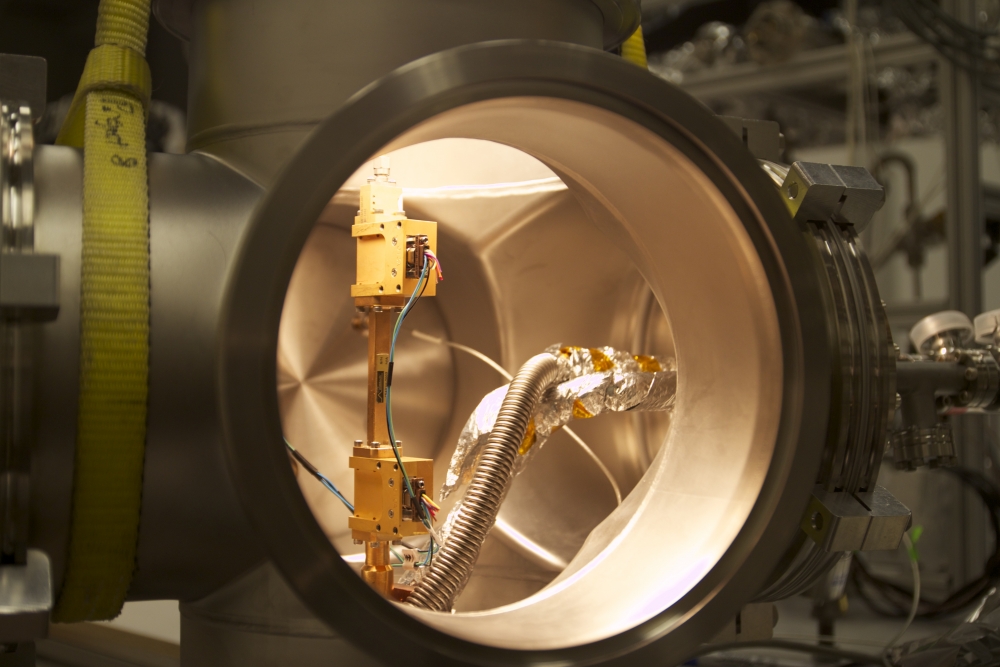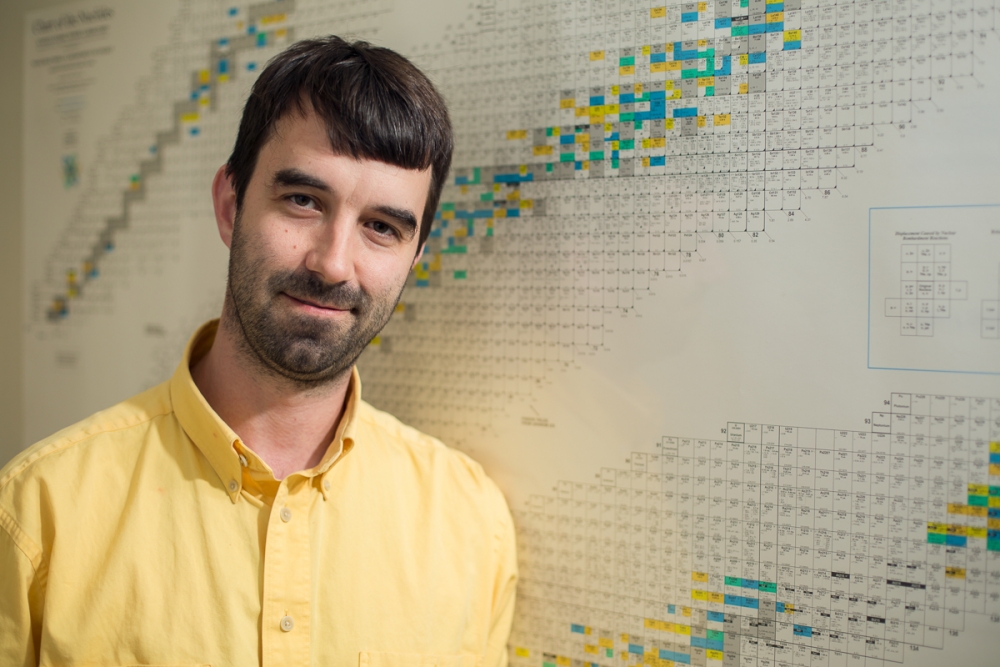
A Top 10 Breakthrough

Research on electron cyclotron radiation conducted by UC Santa Barbara physicist Ben Monreal and his colleagues at Project 8 has been named a top 10 breakthrough of 2015 by Physics World magazine.
For the first time, Project 8 — a collaboration of 27 scientists from six institutions in the United States and Germany — detected the frequency of radiation emitted by an individual electron orbiting in a magnetic field. Their findings were published earlier this year in the journal Physical Review Letters.
“We are absolutely thrilled that Professor Monreal’s groundbreaking work within the Project 8 collaboration has received this well-deserved distinction in Physics World magazine,” said Chancellor Henry T. Yang. “I would also like to acknowledge the contributions by our assistant project scientist Luiz de Viveiros and graduate student Benjamin LaRoque. Professor Monreal’s research investigating neutrino mass measurement has resulted in prestigious awards and fellowships over the years, and this top 10 achievement is another wonderful testament to his innovation and interdisciplinary approach.”
Said Pierre Wiltzius, the Susan & Bruce Worster Dean of Science: “Ben is yet another example of the extraordinary quality of young people that we are able to attract to join us at UCSB. We are among the very top in the country in terms of our young faculty winning prestigious young faculty awards.”
Michael Witherell, vice chancellor for research, noted that Monreal and fellow scientist Joseph Formaggio of the Massachusetts Institute of Technology approached the problem of how to conduct nuclear physics experiments using techniques that come from outside their immediate field.
“They applied techniques from atomic physics that are typically used in much lower-energy experiments,” Witherell said. “This new direction is completely different from the way those of us who do nuclear and particle physics think about detecting particles. The improvement they’ve gotten over this short amount of time is really very impressive.”
According to Witherell, such out-of-the-box thinking is part of a long history in physics of discovering new techniques and applications that were not anticipated as part of the original concept.
“One of the reasons our result is exciting is that it gives us a new way of capturing electrons to use as a back door into studying neutrinos,” said Monreal, who leads the Particle Astrophysics Laboratory in the High-Energy Physics Group. “We hope it will lead to a measurement of the neutrino mass, which is currently one of the last remaining unknowns in the standard model of particle physics.”
By applying the technique of cyclotron radiation emission spectroscopy to measuring the neutrino mass, Monreal and the Project 8 team will take extremely precise measurements of the electron energies from tritium decays and infer the neutrino mass from the shape of the electron energy spectrum.
“Ben is super creative and this work is clearly that,” said Philip Pincus, professor and chair of the Department of Physics. “This work provides proof that they can do the experiment to measure the neutrino mass. If they can actually measure the mass of the neutrino, that research could possibly win a Nobel Prize. It’s really important.”
The second-most abundant particles in the universe, neutrinos lack an electric charge and are produced by the decay of radioactive elements. They come in three varieties: electron, muon and tau, each with a different, still-unknown mass. While the differences between the masses of each type of neutrino have been measured, the value upon which these differences ride has remained elusive.
The neutrino may have played an important role in the early universe, participating in some of the various symmetry breakings that occurred as the universe cooled. It may continue to play a role in the universe today, since huge numbers of “relic neutrinos” are thought to have survived the Big Bang and even now may tweak the balance between kinetic energy and mass energy in galaxies.
Once refined, the technique developed by Project 8 has the potential to make the first direct measurement of the mass of the neutrino.
“Every time tritium decays, it emits an electron and a neutrino and you can detect those electrons,” Monreal explained. “One day our instrument will be able to measure them. If you can measure electron distribution precisely enough, you can figure out neutrino mass, which we’ve been talking about for 80 years now.”



